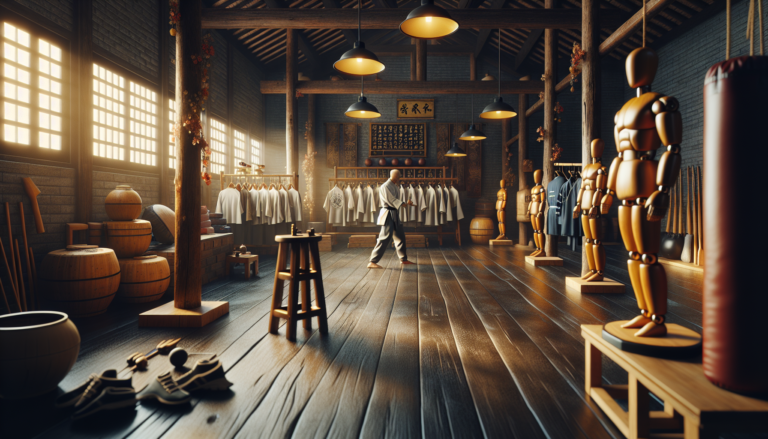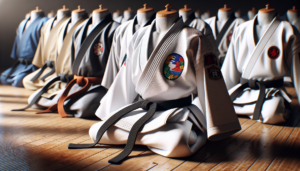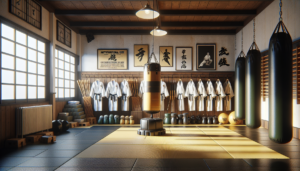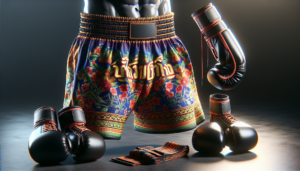Introduction to Wing Chun Kung Fu
Wing Chun Kung Fu is a fascinating and highly effective martial art that has gained global recognition for its unique techniques, rich history, and practical applications. This traditional Southern Chinese martial art focuses on close-range combat, quick strikes, and efficient movements, making it an ideal choice for self-defense and combat training.
What is Wing Chun Kung Fu?
At its core, Wing Chun is a style of Kung Fu that emphasizes economy of motion, speed, and practicality. It is characterized by its direct, linear attacks, and simultaneous defense and offense. Wing Chun practitioners aim to intercept and counter an opponent’s attacks while delivering rapid strikes to vulnerable areas.
One of the key principles of Wing Chun is “lat sau jik chung,” which translates to “attacking hand always springs forward.” This concept emphasizes the importance of maintaining constant forward pressure on an opponent, using the closest weapon to strike the nearest target.
Origins and Evolution of Wing Chun
The history of Wing Chun is steeped in legend and can be traced back to the Shaolin Temple in China. According to popular accounts, Wing Chun was developed by a Buddhist nun named Ng Mui, who distilled the essence of Shaolin Kung Fu into a more streamlined and efficient system.
Over time, Wing Chun evolved and branched out into various lineages, each with its own unique characteristics and training methods. Today, Wing Chun is practiced worldwide, with prominent schools and practitioners found in many countries.
Key Techniques in Wing Chun Kung Fu
Wing Chun employs a range of techniques that are designed to be simple, direct, and effective. These techniques are honed through rigorous training and drills, allowing practitioners to develop speed, precision, and reflexes.
Basic Techniques and Drills
The foundation of Wing Chun lies in its basic techniques and drills. These include:
- Siu Nim Tao (Little Idea Form): This is the first form learned in Wing Chun, focusing on developing proper structure, stance, and hand positions.
- Chum Kiu (Seeking the Bridge): The second form builds upon Siu Nim Tao, introducing footwork, turning, and bridging techniques.
- Biu Ji (Thrusting Fingers): The third form teaches emergency techniques and recovery methods when under pressure.
In addition to forms, Wing Chun training incorporates various drills, such as Chi Sao (Sticky Hands), which helps develop sensitivity, reflexes, and the ability to “feel” an opponent’s intentions.
Advanced Techniques and Applications
As students progress in their Wing Chun training, they learn more advanced techniques and applications. These may include:
- Trapping and controlling an opponent’s limbs
- Close-range strikes and elbows
- Takedowns and ground fighting
- Wooden dummy training for power development
Advanced Wing Chun practitioners also focus on refining their body mechanics, footwork, and the ability to adapt techniques to various situations.
Lat Sau Jik Chung: Constant Forward Pressure
A defining characteristic of Wing Chun is the concept of “lat sau jik chung,” or maintaining constant forward pressure. This means that practitioners seek to control the center line and keep their attacks moving forward, not pulling back their hands during exchanges.
By employing relentless forward pressure, Wing Chun practitioners aim to overwhelm their opponents and deny them the opportunity to counter-attack effectively. This principle is emphasized in training and sparring, with students learning to “stick” to their opponents and maintain offensive momentum.
Training and Sparring in Wing Chun
Wing Chun training is known for its practicality and emphasis on realistic application. Students engage in various training methods to develop their skills and test their techniques against resisting opponents.
Training Methods and Regimens
Wing Chun schools employ a range of training methods to help students master the art. These may include:
| Training Method | Description |
|---|---|
| Forms practice | Repetition of solo forms to ingrain techniques and develop muscle memory |
| Drills and partner exercises | Structured drills to practice specific techniques and reactions |
| Chi Sao (Sticky Hands) | Sensitivity training to develop reflexes and the ability to “read” an opponent |
| Sparring | Free-form practice against a resisting opponent to test skills under pressure |
Wing Chun training often follows a progressive curriculum, with students mastering basic techniques before moving on to more advanced concepts and applications.
Sparring and Real-World Applications
Sparring is an essential component of Wing Chun training, allowing students to test their techniques against non-compliant partners. Through sparring, practitioners learn to adapt their movements, maintain their structure under pressure, and apply their techniques in dynamic situations.
Wing Chun’s focus on practicality and efficiency makes it well-suited for real-world self-defense scenarios. The techniques are designed to be simple and direct, enabling practitioners to respond effectively to sudden attacks and aggressive opponents.
Notable Wing Chun Masters and Practitioners
Throughout its history, Wing Chun has been shaped by numerous influential figures who have contributed to the art’s development and spread.
Influential Figures in Wing Chun
Some of the most notable Wing Chun masters and practitioners include:
- Ip Man: Perhaps the most famous Wing Chun master, Ip Man was instrumental in popularizing the art and teaching many renowned students.
- Bruce Lee: Although he later developed his own martial art, Jeet Kune Do, Bruce Lee began his training in Wing Chun and helped bring international attention to the style.
- Wong Shun Leung: Known as the “King of Talking Hands,” Wong Shun Leung was a top student of Ip Man and a fierce fighter who tested Wing Chun in numerous challenges.
These masters, along with many others, have left a lasting impact on Wing Chun and inspired generations of practitioners.
Modern-Day Practitioners and Instructors
Today, Wing Chun continues to thrive through the teachings of skilled instructors and practitioners around the world. Some notable figures in the contemporary Wing Chun community include:
- Sifu Francis Fong: A dedicated master who emphasizes the importance of fundamentals in Wing Chun training.
- Sifu Phillip Redmond: Known for his practical approach to Wing Chun and adapting techniques for street applications.
- Adam Chan: A martial arts instructor and YouTube content creator who shares insights and lessons on Wing Chun through engaging videos.
These individuals, along with many others, are helping to preserve and promote Wing Chun for future generations.
Benefits of Practicing Wing Chun Kung Fu
Wing Chun offers numerous benefits for practitioners, ranging from physical and mental improvements to practical self-defense skills.
Physical and Mental Benefits
Regular Wing Chun training can provide a range of physical and mental benefits, such as:
- Improved cardiovascular health and endurance
- Increased strength, speed, and coordination
- Enhanced balance and body control
- Greater flexibility and joint mobility
- Reduced stress and improved mental focus
- Increased self-confidence and discipline
Wing Chun’s emphasis on relaxation, efficiency of movement, and mental clarity can also contribute to overall well-being and personal growth.
Self-Defense and Practical Applications
One of the primary benefits of Wing Chun is its effectiveness as a self-defense system. The techniques are designed to be simple, direct, and practical, allowing practitioners to defend themselves in real-world situations.
Some of the key self-defense applications of Wing Chun include:
- Close-range striking and trapping
- Countering common street attacks, such as punches, grabs, and chokes
- Defending against multiple attackers
- Adapting techniques to confined spaces and various environments
By training in Wing Chun, individuals can gain the skills and confidence to protect themselves and their loved ones in threatening situations.
Wing Chun vs Other Martial Arts
Wing Chun is often compared to other martial arts, highlighting its unique characteristics and effectiveness in various contexts.
Wing Chun vs Kenpo Karate
Kenpo Karate is a martial art that combines elements of traditional karate with self-defense techniques, focusing on fluid movements and adaptability in combat. When compared to Wing Chun, Kenpo Karate tends to have a greater emphasis on longer-range techniques and circular movements.
Wing Chun, on the other hand, focuses more on close-range combat, linear attacks, and simultaneous defense and offense. While both styles can be effective for self-defense, Wing Chun’s simplicity and directness may give it an advantage in certain situations.
Wing Chun vs Bagua
Bagua, or Baguazhang, is a Chinese internal martial art characterized by circular walking patterns, evasive footwork, and palm strikes. In contrast to Wing Chun’s linear and direct approach, Bagua emphasizes continuous movement and the use of angles to deflect and redirect an opponent’s energy.
While Bagua’s evasive tactics can be effective for defense, Wing Chun’s forward pressure and straightforward attacks may be more suitable for quickly neutralizing an opponent in close-quarters combat.
Wing Chun vs Wing Chun: Internal Sparring
An interesting aspect of Wing Chun training is the practice of internal sparring, where Wing Chun practitioners test their skills against each other. This allows students to experience the dynamics of Wing Chun vs Wing Chun encounters and refine their techniques under pressure.
Internal sparring is crucial for developing timing, sensitivity, and the ability to adapt to an opponent’s energy. It also highlights the importance of adhering to Wing Chun principles, such as maintaining forward pressure and protecting the center line, even when facing another Wing Chun practitioner.
Conclusion
Summary of Key Points
In summary, Wing Chun Kung Fu is a powerful and pragmatic martial art that offers a wide range of benefits for practitioners. Its unique techniques, focus on efficiency, and emphasis on practicality make it an effective system for self-defense and personal growth.
Through dedicated training, Wing Chun students can develop physical skills, mental discipline, and the ability to defend themselves in real-world situations. The art’s rich history and influential figures have contributed to its global recognition and popularity.
Future of Wing Chun Kung Fu
As Wing Chun continues to evolve and spread, it is likely to maintain its position as a respected and sought-after martial art. With the guidance of skilled instructors and the dedication of practitioners worldwide, Wing Chun will undoubtedly continue to attract individuals seeking effective self-defense skills and personal development.
The future of Wing Chun lies in the hands of its community, who are committed to preserving the art’s traditions while also exploring new ways to make it relevant and accessible to modern practitioners. As more people discover the benefits of Wing Chun, the art will continue to thrive and inspire generations to come.






